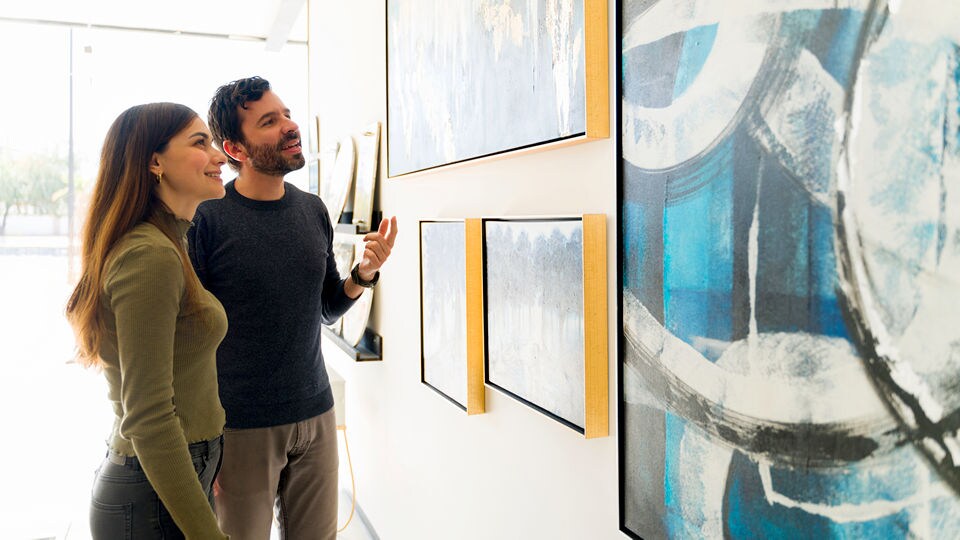Article
Re-ID part 5: How Can Cultural and Entertainment Venues Use Re-ID Technology?

When most people think of people-counting technology, they don’t typically envision its usage outside of a retail setting. Traditionally, people counting has been used by retailers and shopping centers to understand visitor numbers, conversion, and usage of areas. However, people counting is also used by a variety of cultural and entertainment venues that don’t fall into the typical “retail” category, like museums, libraries, and casinos. Why do they count foot traffic, and how can Re-ID further enhance the insights they already receive?
What is Re-ID enabled people-counting technology?
Re-ID, or Re-Identification technology, uses artificial intelligence to assign a unique identifying number to anonymous individuals within a property. It works by analyzing a range of distinctive characteristics, including a person’s clothing, clothing patterns, colors, accessories, and logos. This allows an individual to be recognized across multiple connected sensors throughout a property without using personally identifiable information (PII), such as facial recognition.
Accurate foot-traffic data — and much more
Without using some form of people counting, entertainment and cultural venues might have no way of understanding visitor numbers. While some venues, like museums, are often ticketed, this is not universal. Visitor numbers are often tied to securing government funding, or in the case of casinos, monitoring traffic numbers may be a requirement by state gaming commissions.
Of course, there are other uses for simple people counting at these venues. Museums and tourist attractions often have gift shops, so traffic data is beneficial for measuring conversion and managing labor — the standard retail key performance indicators. But after this, what comes next? How can Re-ID go beyond standard metrics and provide additional insights for these types of venues?
People counting and usage of different areas
Cultural and entertainment venues are often very large spaces. Think of all the different galleries and exhibitions within a museum, or the many floors of a large library. Once an individual has entered the front door, how can these venues determine where visitors are spending their time? Which floors are the most popular? How long do people typically spend in different areas?
The above questions have, in the past, been partially addressed using Wi-Fi technology in conjunction with traditional people counting solutions. Sensors can be installed at the entrances of different floors or rooms to count visitors in specific areas, while Wi-Fi can provide insights into dwell time. However, this is not a perfect solution. If a person visits an area multiple times, they will be re-counted, artificially inflating visitor numbers. Likewise, Wi-Fi tags only provide sample-level data, and multiple tags would be required to cover a large space.
Re-ID can solve all of these challenges. By identifying individuals and recognizing them across multiple connected devices, it ensures that if an individual temporarily moves out of view, they won’t be re-counted when they reappear. A person could visit a particular gallery or exhibition on more than one occasion without being counted twice, as Re-ID would recognize them as the same individual each time. The technology can also highlight the most popular zones within a floor — without requiring an excessive number of devices. Additionally, Re-ID can be used outdoors, enabling venues that may have previously struggled to measure usage of their outdoor spaces to now do so effectively.
Dwell time, traffic patterns, and measuring success for exhibitions and events
Re-ID can be used to measure the success of events or campaigns. Continually identifying anonymous individuals allows Re-ID to monitor individual dwell times, helping venues like museums understand how long visitors spend in specific galleries or exhibition spaces. This enables venues to assess whether certain spaces are more engaging than others.
For example, if a museum installed a new exhibition, or a library hosted an event, Re-ID would be able to demonstrate if there were any significant changes in traffic patterns or dwell times. It can also help venues understand whether specific exhibits would benefit from being relocated to a more optimum location and can provide insights into how exhibits should be rotated. Did the new exhibition drive more foot traffic? Was the dwell time at this exhibition longer or shorter than that of other exhibitions? Did visitors attend only one exhibition or gallery, or did they go to other areas of the museum, too? At libraires, are people coming in to borrow a book and leaving, or are they spending time studying or browsing? Re-ID can help answer these questions.
Beyond people counting: Visitor demographics and more
In addition to tracking visitor numbers and understanding where they spent their time, Re-ID can also provide insights into who is visiting by providing demographic data. For example, if a library or museum wanted to target a specific age group, Re-ID’s demographic analysis can show whether the campaign was successful or not.
Furthermore, Re-ID can provide real-time occupancy data, allowing venues to know how many people are in a particular area at any given time. This is beneficial for ensuring capacity limits aren’t exceeded and ensuring areas aren’t becoming too crowded.
Learn more about Re-ID people counting for cultural and entertainment venues
Re-ID technology can help cultural and entertainment attractions understand their venues like never before. Being able to understand usage of areas, where the hotspots are, and how long people spend in different areas can be hugely beneficial. Re-ID not only helps these venues optimize how they count foot traffic, it also allows them to make data-driven decisions based on real insights.
Excited to hear more? Contact Sensormatic today to determine whether Re-ID enabled people-counting devices are the right solution for your cultural or entertainment venue.

